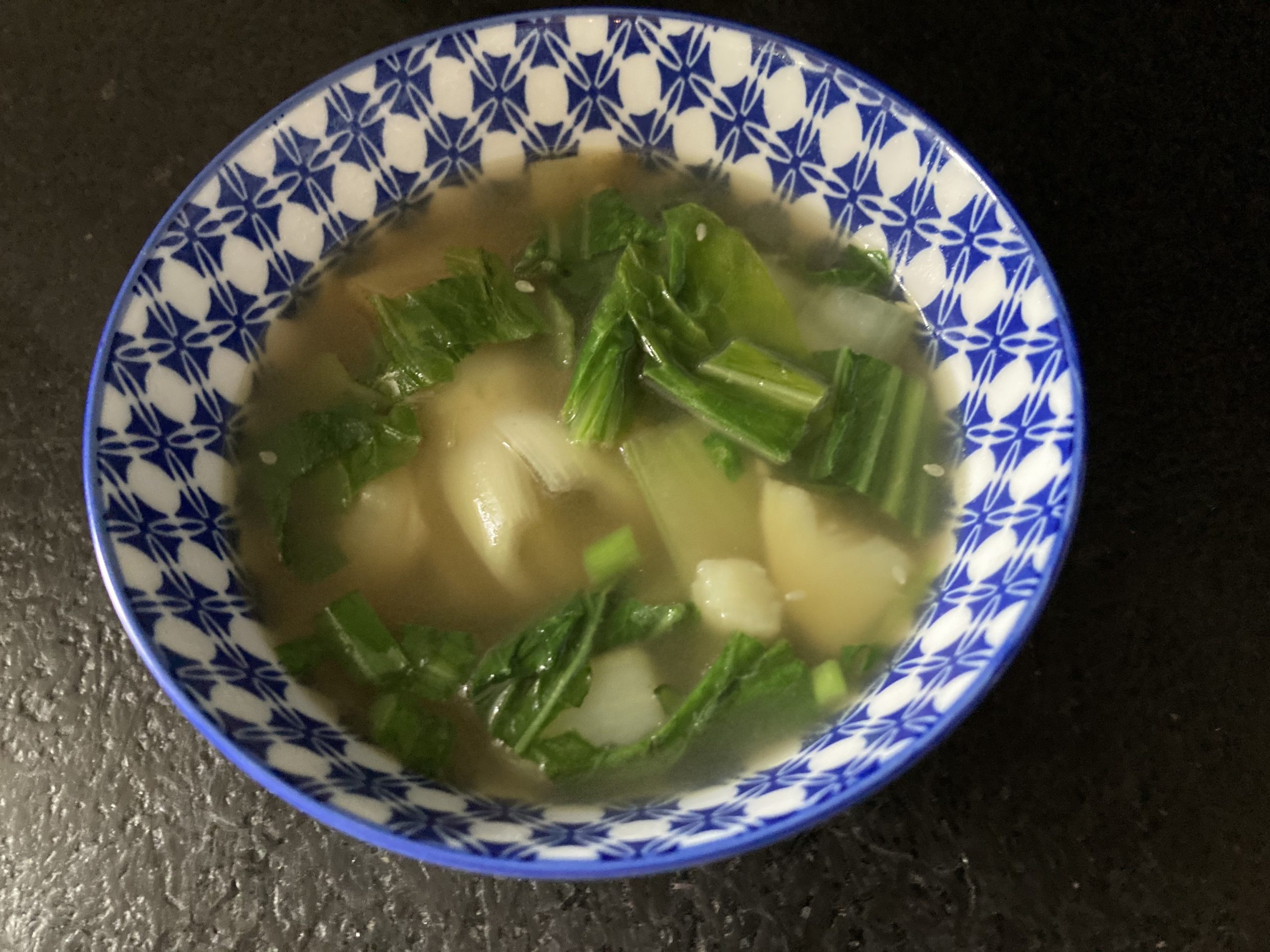
Bok Choy Redemption
I had given up on bok choy, because all I ever did was add it it to my soggy stir-fry. I felt guilty, because I was really giving up on myself. It certainly isn’t bok choy’s fault. Although, it should take credit for causing so many impulse purchases.
I know I’m not alone. How can you not resist that striking beauty? My friend and editor Dorothy Patent, a prolific book author and noted amateur Chinese brush painter, also admits to being a repeat impulse purchaser of bok choy at the farmers market.
“I’ll stop, hypnotized by the pure white leaf bases, embracing one another, curving outward as if on the verge of bursting, then relaxing inward, the whiteness narrowing as the leaves expands outwards, dark green ovals nourished by branching white veins. Sure enough, I can’t help myself. I must make room in my already heavy bag for just one fresh perfect bok choy, forgetting almost on purpose that last week’s bunch still lurks at the back of the vegetable drawer in my fridge.”
You see those curves, and that sharp white dark contrast, and next thing you know it’s in your cart. You latch onto one halfway decent way to prepare it, and call off the search. Next thing you know, you’re bored out of your mind.
When you’re in a rut, you can’t see the world of possibilities. With enough determination, you can maybe crawl out. But sometimes a little bump can help push you over the edge and into a well-lit world of options. In the case of my bok choy capitulation, that catalyst came in the form of a farmer at the Missoula Farmers Market on North Higgins (aka the “original” Missoula Farmers Market). Nancy is from northern China, has limited English, a great garden, and is a wealth of simple, vegetable-based recipes. I was at her stand for the garlic chives, and next thing you know she is giving me the hard sell on some heads she had languishing. I had just given up on bok choy, but I’ve learned it pays to say yes to Nancy.
She calls it Bai Chai, which means something along the lines of white cabbage, and she sealed the deal with a soup recipe called Bai Chai Tum, which means Bok Choy soup. It’s mostly bok choy and potatoes, with a few seasonings. Thanks to the language barrier I wasn’t able to get a perfect read on how she makes it, but I worked with what I understood, adjusting as I saw fit, and it was a hit. The only ingredient I use that probably wouldn’t be found in Nancy’s northern Chinese version is butter.
Nancy recommends adding tofu as a protein. I’ve also tried it with egg, shrimp, scallops, browned ground lamb and Chinese BBQ pork, each of which becomes a new ream of flavor to play in, possibly with additional ingredients or garnishes. I have also tried an “all of the above” protein special, which was was pretty amazing.
But before you go crazy, I recommend starting with this simple base. Get a feel for the core flavor of this soup and then build slowly from there.
Bok Choy Potato Soup
This soup comes together in just a bit more time than it takes to boil some potatoes.
Serves four
1 lb potato, diced into ½-inch cubes
1 tablespoon bouillon paste
1 tablespoon butter
1 teaspoon toasted sesame oil
1 teaspoon red pepper flakes
1 teaspoon black pepper
2 tablespoons soy sauce
½-oz crushed ginger
1 small crushed shallot or part of an onion
1 tablespoons oyster sauce
1 tablespoon fish sauce
1 lb bok choy, washed and trimmed
Optional proteins: Tofu, seafood, meat. You can also crack an egg in and let it cook
Garnishes and condiments: Hoisin sauce, chives, chile paste, mayo, salt to taste
Heat 2 quarts of water to a boil. Add the bouillon paste and potatoes. Simmer for about 15 minutes, until they are soft.
While the potatoes simmer, clean the bok choy, as it can be dirty near the base. If you have baby bok choy, submerge them whole in clean water and drain them, repeating as needed.
For large bok choy, pull off each stem — or leaf, however you see it — and wash it separately. Then cut the white halves from the leafy halves of each unit, roughly in half. Chop the leaf part coarsely. Chop the stem part into sections of about an inch in length and keep separately. Trim the bottom of the base and slice it if you like, but definitely use it as it’s particularly flavorful.
When the potatoes are soft, add the butter, sesame oil, soy sauce, fish sauce, oyster sauce, pepper flakes, black pepper and the white parts of the bok choy, including the bases, (if using baby bok choy add the whole things), along with any protein you may care to add. Cook for five minutes at a simmer. Add the bok choy leaves and cook for another 2 minutes.